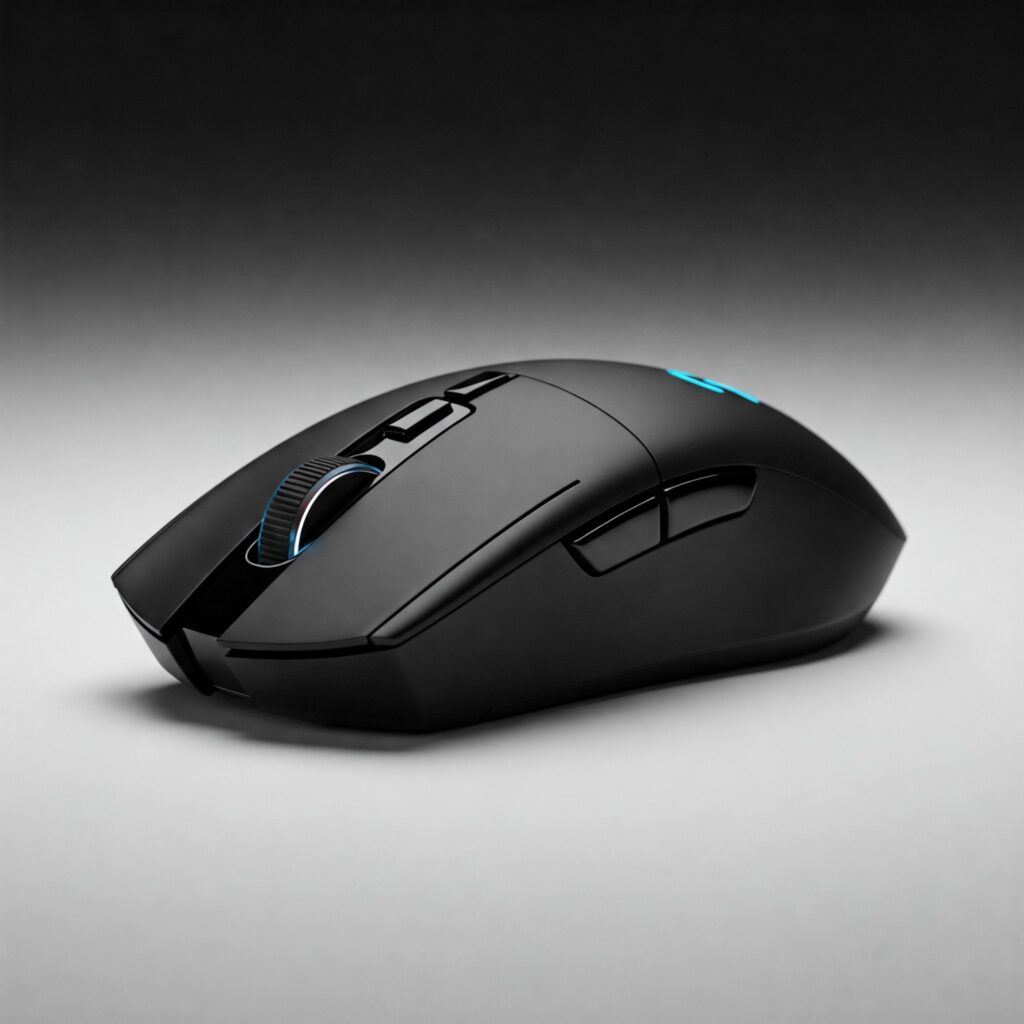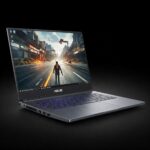Your Next Click
Think the humble computer mouse has peaked? Think again! While we’ve seen incredible progress, especially in the wireless and sensor departments, manufacturers are relentlessly pushing the boundaries. Whether you’re a competitive esports player demanding near-instant response, a creative professional needing pixel-perfect precision, or just someone who appreciates a comfortable, reliable pointer, the next generation of mice promises some exciting advancements expected around late 2025, into 2026, and beyond. Get ready to upgrade your expectations!
- The Sensor Speed Wars… Evolve into Precision Supremacy
- Cutting the Cord (Flawlessly): Wireless Without Worry
- The Evolution of the Click: Faster, Stronger, Quieter?
- Shape, Weight & Feel: Finding Your Perfect Fit
- The Finishing Touches: Details That Elevate
- Who’s Leading the Charge? (And What Might It Cost You?)
- What Does This Mean For You?
1. The Sensor Speed Wars… Evolve into Precision Supremacy
While headline DPI numbers will likely continue their slightly absurd climb (get ready for sensors boasting 40,000, 50,000 DPI, or more!), the real action is in responsiveness and accuracy:
- Wireless Polling Rates Go Hyper: Forget 1000Hz wireless being the standard for high-end. We’re seeing 4000Hz and even 8000Hz wireless polling rates emerge from pioneers like Razer and Logitech. Expect this ultra-high report rate tech to become more common in flagship gaming mice, offering incredibly smooth cursor movement and shaving off crucial milliseconds of input lag. The engineering challenge will be maintaining battery life alongside this performance, but expect clever solutions.
- Flawless Tracking Gets Flawless-er: Expect sensors (like successors to the Razer Focus Pro, Logitech HERO, or PixArt’s best) to boast even higher maximum tracking speeds (beyond 750 IPS) and acceleration, ensuring absolutely no spin-outs even during the wildest flicks. Refinements in Lift-Off Distance (LOD) control and technologies like Motion Sync (synchronizing sensor reports with PC polling) will provide even more consistent and predictable tracking across various surfaces.
2. Cutting the Cord (Flawlessly): Wireless Without Worry
Wireless freedom is non-negotiable for many, and it’s only getting better:
- Rock-Solid Wireless: Expect further refinements in proprietary 2.4GHz wireless protocols (think next-gen Razer HyperSpeed, Logitech LIGHTSPEED, Corsair Slipstream etc.). The goal? Even lower click latency (approaching wired levels consistently) and enhanced interference rejection, crucial in environments saturated with wireless signals. They’ll likely leverage tech insights from Wi-Fi 7 coexistence strategies.
- Bluetooth Gets Smarter (and Efficient): While 2.4GHz remains king for performance, Bluetooth 5.4+ will be standard for secondary connections, benefiting from LE Audio efficiencies for longer battery life in non-gaming scenarios.
- Battery Life Defying Performance: Despite pushing higher polling rates and more powerful sensors, intense competition and advancements in power management (efficient sensors, low-power MCUs) mean we should still see excellent battery life, potentially using even lighter batteries thanks to overall efficiency gains.
3. The Evolution of the Click: Faster, Stronger, Quieter?
The humble mouse switch is getting a high-tech makeover:
- Optical Switches Go Mainstream: Expect wider adoption of optical mouse switches across more brands and price points. Why? They offer near-instantaneous actuation (no physical debounce delay needed), demolishing input lag, and boast insane durability ratings (often 90 million to 100 million clicks or more). Look for refinements focusing on mimicking the satisfying tactile feel of traditional mechanical switches.
- Exploring New Frontiers?: Don’t be surprised if some brands experiment more with magnetic switches or Hall Effect sensors for unique customization options like adjustable actuation points or even longer lifespans.
- Hotswap & Quiet Options: Enthusiast-focused mice might see more hotswappable switch sockets, while the demand for quieter clicks (without feeling mushy) will continue for office-friendly performance mice.
4. Shape, Weight & Feel: Finding Your Perfect Fit
How a mouse feels in hand is paramount:
- Ultralight Obsession Continues: The race to the bottom (in grams!) isn’t over. Expect more sub-50g wireless mice, potentially even dipping into the sub-40g range for larger designs, achieved through advanced materials (magnesium alloys?) and internal structural optimization, without sacrificing rigidity (goodbye, creaky plastic!).
- Ergonomics for Everyone: Alongside ultralights, expect a continued focus on diverse ergonomic shapesscientifically designed for comfort during long gaming or work sessions, catering specifically to palm, claw, and fingertip grip styles across various hand sizes.
- Sustainability Matters: Look for increased use of post-consumer recycled plastics and more eco-friendly packaging designs.
5. The Finishing Touches: Details That Elevate
- Scroll Wheels Evolve: More refined optical or mechanical encoders for precise scrolling, tactile feedback improvements, maybe even more experimentation with haptic feedback scroll wheels or refined free-spin modes.
- Glide Like Never Before: High-quality 100% pure PTFE feet will be standard. We might see more glass skatesoffered stock or as first-party accessories for ultimate speed.
- Smarter Peripherals: Larger onboard memory profiles, more intuitive customization software (we can hope!), and potentially even AI-driven features for performance tuning or personalized settings. USB-C charging will be universal, with faster charging capabilities.
6. Who’s Leading the Charge? (And What Might It Cost You?)
So, who should you watch, and what kind of investment are we talking about for this next wave of clickers?
-
The Major Players: Expect innovation to continue strong from the established titans:
- Razer: Likely updating their popular Viper, DeathAdder, Cobra, and Basilisk lines with these next-gen techs.
- Logitech G: Anticipate successors to the incredibly popular G Pro X Superlight and other G-series gaming mice.
- SteelSeries: Look for next-generation Aerox (ultralight) and Prime (ergonomic esports) models.
- Corsair: Expect updates to their high-performance wireless lines like the Dark Core or M-series.
- Emerging Enthusiast Favorites: Brands like Glorious, Pulsar, Endgame Gear, and potentially Finalmouse (with their characteristic limited drops) will likely push boundaries in weight, shape, and adopting cutting-edge sensors quickly.
-
Approximate Cost Expectations (Highly Speculative for Late 2025/2026):
- Premium Flagship Wireless Gaming: For mice packing features like 4K/8KHz wireless, top-tier sensors, optical switches, and ultralight designs (think the next Viper V3 Pro or Superlight 3), expect prices in the $150 – $200 USD range, similar to or slightly above today’s flagships.
- Ultra-Premium / Niche / Special Editions: Models using exotic materials (like full magnesium alloy shells), featuring truly groundbreaking tech first, or limited exclusive drops could push into the $200 – $300+ USD bracket.
- High-Performance Wired: If you prefer a wired connection for guaranteed stability or want the absolute highest polling rates (wired 8KHz+), next-gen wired flagships will likely offer significant value in the $80 – $120 USD range.
7. What Does This Mean For You?
The next generation of performance mice promises lower latency, higher precision, better durability, lighter weights, and rock-solid wireless connectivity. Whether you need the absolute fastest clicks for esports dominance, pinpoint accuracy for creative work, or just a fantastically responsive and comfortable daily driver, the future looks bright. Start thinking about the features that matter most to you, keep an eye on your favorite brands, and get ready for your next favorite clicker – it’s going to be impressive



